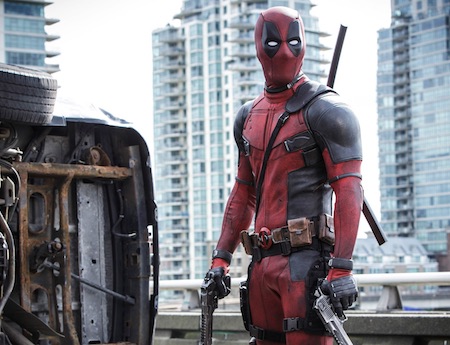‘Deadpool’ Filmmakers: Nothing Like High Dynamic Range

Century City, Calif. — After hitting theaters, Fox’s Deadpool became the highest grossing R-rated film of all time, pulling in $763 million worldwide to date. Once it hit home entertainment, it became the studio’s fastest selling digital title, selling a million copies in its first week of release.
But it was the May 10 release of the action-comedy on Ultra High-Def Blu-ray Disc (UHD BD) that had Deadpool director Tim Miller especially excited. And, keeping with the theme of the film, he didn’t hold back on the bad words describing just how good the film looks in 4K with high dynamic range (HDR).
“The UHD especially was just [expletive] amazing with the level of detail,” Miller said at a recent event at 20th Century Fox. “I noticed as I went through it, it just kept getting better and better. If you had a bad hair [stylist] on set, this format isn’t for you.”
Miller was speaking inside the Fox Innovation Lab, a two-year-old endeavor by the studio to develop new entertainment technologies in consort with consumer electronics companies. Already the endeavor has resulted in Fox announcing that most all of its films would be shot in 4K; the studio becoming a founding member of the cross-industry UHD Alliance consortium; and a partnership with Samsung to include Fox 4K content on the CE company’s UHD TVs.
With UHD BD copies of Deadpool playing on a pair of Samsung’s industry-first UHD BD players next to him, Danny Kaye, EVP of global research and technology strategy for 20th Century Fox Home Entertainment, said that film and other releases on the latest — and possibly last — physical home entertainment technology proves the studio’s commitment to 4K and technologies like HDR.
“We at Fox are dedicated to creating these new technologies aimed at giving [consumers] the best possible viewing experience,” he said.
Deadpool colorist Tim Stipan especially touted the film’s inclusion of HDR, the video tech that offers greater contrast between light and dark images, promising greater detail for every frame of video. The studio did everything for the UHD BD version of Deadpool in HDR, including the menus. And if it took Fox two months just rendering the company logo in HDR for the release, imagine the time it took for Stipan and the film’s creators to do the film itself in HDR.
Broadcasting & Cable Newsletter
The smarter way to stay on top of broadcasting and cable industry. Sign up below
Worth it, Stipan said.
“I felt like every time we were going through it, we were seeing more and more. It allowed me to be better at my job,” he said. “With HDR, you can see what the camera is capturing, more of what the camera captures. This is the wave of the future. The amount of detail you get with flames … it all of the sudden has dimension almost like it’s 3D.”
He compared the arrival of HDR to when high-def first became a home entertainment option, in that with Blu-ray, filmmakers suddenly were noticing details that previous 480p DVD video just didn’t reveal. HDR is opening up a new level of cinematography for filmmakers, he said … but only the back end, after it’s the can.
“For all filmmakers, no one is bringing an HDR monitor on set … because they’re uber expensive,” Stipan laughed. “Knock one of those over, and that’s a $30,000 mistake.”










